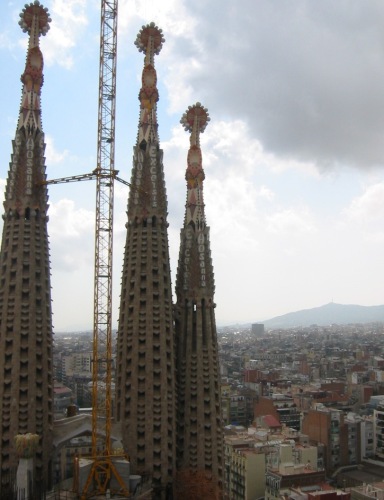Can anybody become an innovator? Are innovators born or made? How much of the ability to innovate is dependent on learning from luminaries and from how many of them? Of course, one might ask first the question what innovation was. As I have pondered on that question in my first and other earlier posts, for the sake of briefly let’s just use the shortest definition of innovation I can come up with: “practical creativity”.
One could argue that you have to be a special type of person to innovate. Certainly, some are better or more efficient at it, but then again the difference might be that the others just have not been coached or encouraged to try.
One lesson that I would like to share is that it becomes possible to innovate when you realize that all it may take is connecting your gifts with your passion, your values, or what some might consider to be your ultimate goals. The more unlikely the combination between your gifts and your passions, the bigger chances you will be able to innovate – once you allow yourself to operate under this paradigm.
Here is why I think this works: you bring your strengths and then pushed by your motivation you will do your best to make things happen. Because you are passion-driven, you are willing to do what it takes, even if your efforts might not be encouraged and/or you might fail at first. Along the way, you will likely discover what else might be needed, e.g., what you might still have to learn or to be able to do, where do you need to be, with whom you need to associate… No doubt it helps if along the way you encounter people who make your discovery journey more efficient.
I think that real life examples are always useful. Should I talk about my innovation gurus and the insights gained from them? I’d rather not bore you with a list, so I will just mention the one I think to be my first… my 5th grade physics teacher! Somehow she made physics appear so cool and creative, yet useful. I was already studying art hoping to become a fashion or jewelry designer (“wearable art”?) but I was then encouraged to think I might be able to fulfill my inclination for creative endeavors AND in the same time satisfy my strong desire to help people (not only to look better)… Shazam! I could become a biomedical scientist.
I have continued to be fascinated by art and fashion, but went on to use my creativity to design therapies instead of clothing (the idea of personalized medicine is not that different from the idea of wearing clothes that really fit each of us, is it?) I have often gravitated toward art, even when doing science. By finding ways to discover and enhance the intricate beauty of the human body, as seen through a microscope or other imaging instrument, including developing a visually stunning technique to assess chemical reactions triggered by disease, I was able to stay close to practical art while in the same time fulfilling my passion to help people by designing strategies to diagnose medical problems and to enhance their health.
